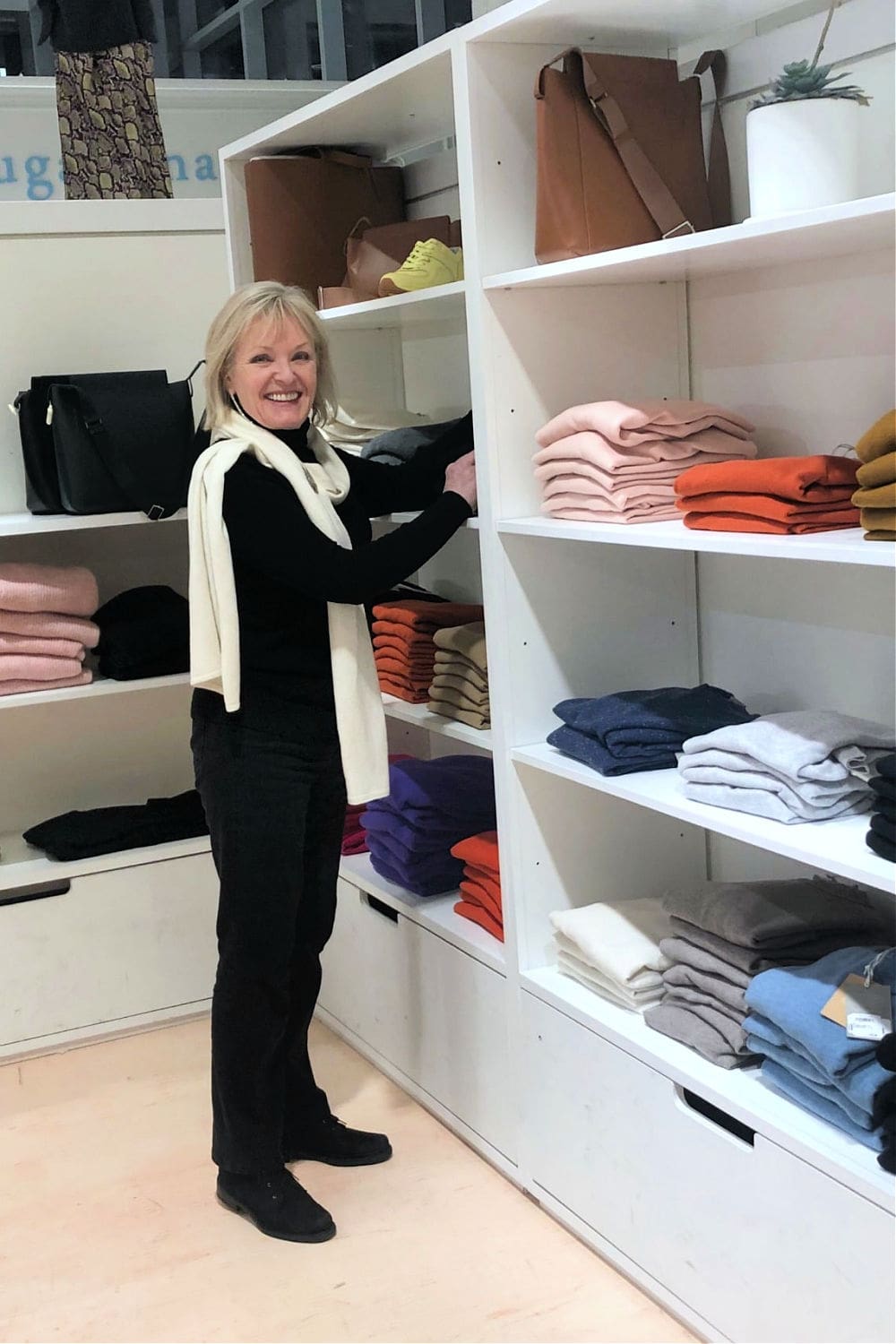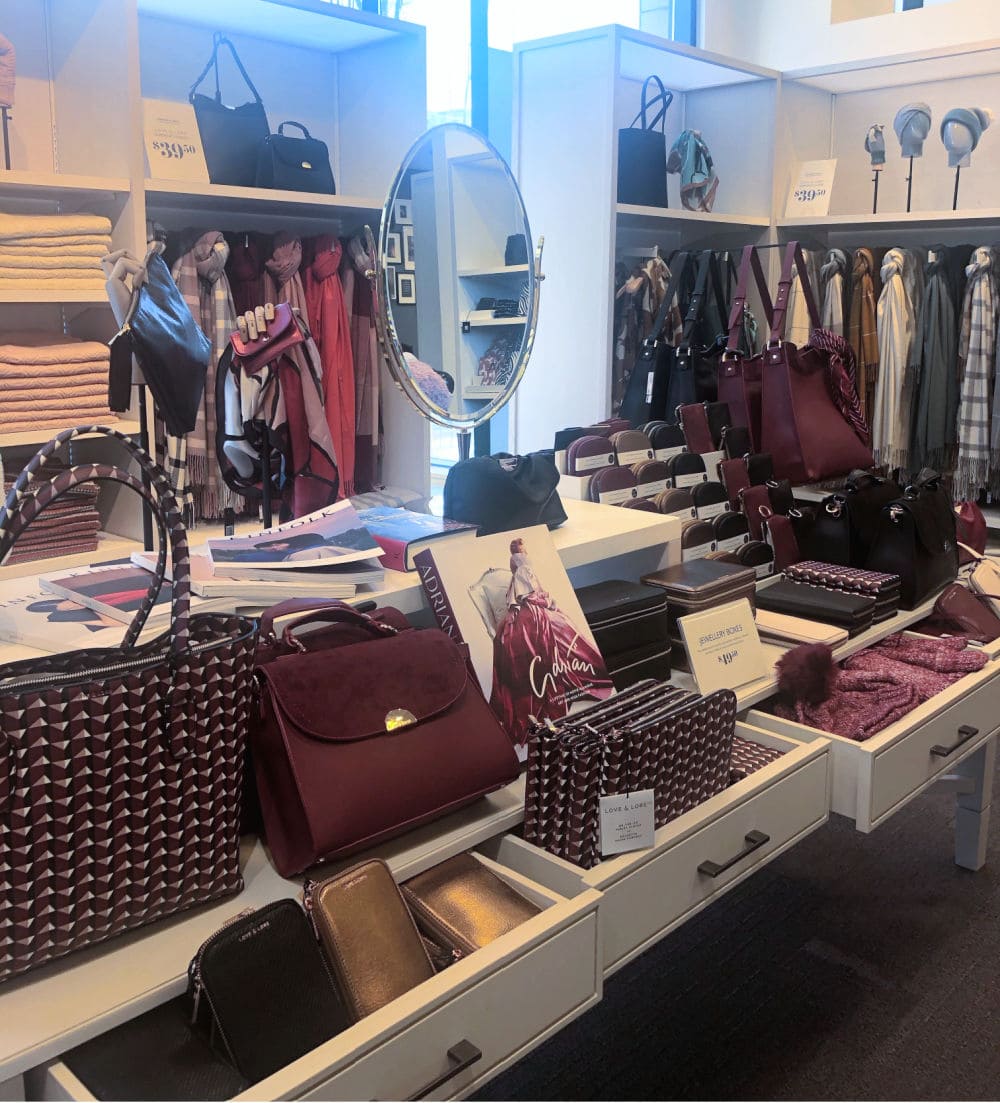Most of us have been shopping long enough to know better…and yet here we are, still buying things that don’t quite work for our wardrobe. A red sale sticker, a fantasy lifestyle, or that “this will change everything” sweater that later mocked us from the closet. I’ve made all of these mistakes, sometimes twice, just to be sure they were mistakes.
The truth is, shopping isn’t just about clothes. It’s about who we think we’re becoming. A purchase can promise confidence, possibility, or maybe just a distraction from the laundry pile. That’s why even smart, self-aware women (raises hand) still get tripped up.
Somewhere along the way, I realized that awareness — not willpower — is what actually changes how we shop. Once you notice your patterns, it gets easier to make choices that truly fit your real life.
So, instead of a list of “don’ts,” think of this as a friendly audit — ten common shopping patterns that quietly derail us, and a few gentle ways to outsmart them before they land in your cart.

1. Buying for the Life You Wish You Had
It’s easy to buy for the life we wish we had. The one where we’re constantly going out, taking spontaneous trips, or attending elegant parties that don’t actually exist on our calendar. I’ve done it too — standing in a fitting room, imagining some future version of myself who’s far more social than reality would suggest.
There’s nothing wrong with aspiration. But if most of what’s hanging in your closet is waiting for a “someday,” you end up short on clothes that work for your real, everyday life. That’s when getting dressed starts to feel complicated…not because you lack options, but because they don’t fit the life you’re actually living.
Here’s a quick reset: before you buy something, picture next Tuesday. Would this piece make sense there? If not, it’s probably speaking to fantasy, not function. Build around the life you actually have, and your wardrobe will quietly start working harder for you.
You may also enjoy reading 10 Tips to Elevate Your Everyday Style Over 60.
2. Shopping for a Size Instead of a Fit


For years, I treated the number on a clothing tag like a moral scorecard…and I bet many of you do too. Smaller was better and proof that I was “on track.” Bigger felt like failure. It sounds ridiculous when I say it out loud, but I know I’m not the only one who’s done it.
Here’s what I’ve learned: the number doesn’t matter. Fit does. No one else sees the tag, and no one cares what size you’re wearing — they only see how comfortable and confident you look.
If you find yourself reaching for a smaller size out of habit, pause for a moment. Ask, does this feel good when I move? Do I feel at ease in it? That comfort you feel is what confidence actually looks like.
Here are 6 Style Myths Women Over 60 Should Ignore.
3. Believing the Fitting Room
Store lighting should come with a warning label. It can make your skin glow, your jeans look miraculous, and your judgment disappear. I’ve learned (the hard way) that a dress that looks amazing under flattering lights can tell a very different story at home.
The fitting room is designed to sell, not to tell the truth. So before you hand over your credit card, take a pause. Step back from the mirror, move around, sit down, and ask yourself a few simple questions: Do I love this, or am I just surprised it fits? Would I still want it if I saw it online with different lighting?


If possible, snap a photo. The camera always tells the truth…sometimes more truth than we want.
The goal isn’t to mistrust every mirror, but to slow down long enough to notice what’s real. Because when you stop believing the fitting room, you start believing your own judgment instead.
4. Rethinking the Sale Rack


A bright red markdown sign can make even the most disciplined shopper lose perspective. I’ve convinced myself more than once that something was “worth it” simply because it was half off. Of course, most of those pieces ended up hanging unworn, quietly reminding me that math isn’t the same as logic.
A so-called bargain isn’t a bargain if it doesn’t get worn. Before buying, try asking yourself one simple question: Would I want this if it were full price? If the answer’s no, it’s probably just the sale talking.
It helps to remember that a smaller wardrobe you actually wear is worth more than a closet full of markdowns you don’t. It’s not about being frugal — it’s about being intentional.
Saving money feels nice in the moment, but saving yourself from regret feels even better. You may also enjoy reading Cost Per Wear and Investment Dressing
5. Ignoring Necklines and Shapes
Color gets all the credit, but shape quietly does most of the work. Necklines frame the face, guide the eye, and determine whether clothes look balanced or awkward. If something feels “off,” it often isn’t your body, it’s the cut.
As our proportions and posture change over time, so should the lines we wear near our face. A higher neckline can soften the chest area; a gentle V can elongate and lift. Even the slope of a shoulder seam can decide whether a jacket feels structured or sloppy.
You don’t need to memorize rules, just notice what looks alive and what drags you down. Shape does the heavy lifting that color can’t fix.
If you’re curious about which necklines work best with your face and body, I shared more in The Best Neckline for Your Face and Body Shape.
6. Confusing Quantity with Quality
There was a time when I thought more clothes meant more options. It doesn’t. It just means more decisions and more frustration. Ten versions of the same black tee don’t give you variety; they give you noise.
At this stage of life, quality outperforms quantity every time. A few well-made pieces that hold their shape and feel good against your skin are worth far more than a pile of “good enough.”
When you buy something new, ask yourself: Would I rather have one of these, or three that almost work? The answer usually points toward what you’ll actually wear.
Fewer, better things aren’t about minimalism — they’re about sanity.
7. Disregarding Fabric and Care Instructions
There was a time when “dry clean only” didn’t faze me. I’d tell myself I’d deal with it. Fast forward to today, and I know better. If something can’t go in the wash or handle a quick steam, it won’t get worn and it’s too fussy for real my life.
Fabric matters more than we give it credit for. The right one feels comfortable, breathes well, and holds its shape. The wrong one wrinkles, pills, or itches no matter how nice the label sounds.
Before buying, check the tag and ask, Will I actually care for this the way it needs? If the answer’s no, leave it behind. A beautiful fabric you can’t maintain isn’t an investment — it’s a chore waiting to happen.
8. Overdoing the Trends
Trends are fun, and I like to experiment, but they’re best in small doses. A bag in the season’s color or a blouse in a current print can keep you looking fresh without veering into costume territory.
The trick is balance. Too much trend at once, and suddenly the outfit is wearing you instead of the other way around.
If you are interested in what’s in and out for 2025 and how to stay stylish without overcommitting, be sure to read this post.
9. Shopping as Entertainment
Sometimes we shop just to feel better if we’re bored, restless, or needing a small lift. It works for about five minutes. Then the thrill fades, and the sweater ends up hanging there, tags still attached, quietly mocking us.


There’s nothing wrong with wanting a pick-me-up, but it helps to pause and ask, what do I actually need right now? A walk, a call, or a change of scenery usually does the trick.
I find shopping with intention works far better than random browsing. If you’re trying to define your core style, you might enjoy How to Hone Your Personal Style Over 50.
10. Ignoring Comfort
There was a time when I’d put up with shoes that rubbed or sweaters that itched just because they looked great. That time has passed. If it is uncomfortable in the store, it will be unbearable in real life. Life is too short to suffer through a bad fit.
I wrote more about choosing comfort without giving up style in How to Use Fashion to Combat the Invisible Woman Syndrome Over 60.
Final Thoughts
None of us get it right every time…certainly not me. But once you see the habits that trip you up — buying for the fantasy life, chasing a size, or mistaking quantity for variety — you can start to shop differently.
A thoughtful purchase costs the same as an impulsive one; it just gives more back.
That’s what a well-styled life is really built on — fewer mistakes, more intention, and clothes that feel like they belong to you.
